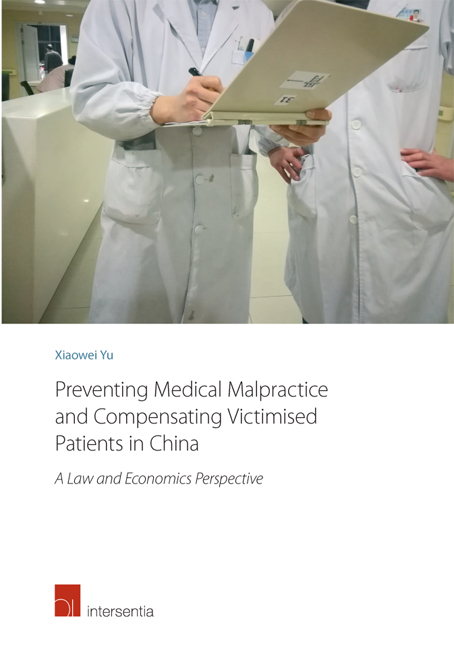 Preventing Medical Malpractice and Compensating Victimised Patients in China
Preventing Medical Malpractice and Compensating Victimised Patients in China Book contents
- Frontmatter
- Acknowledgements
- Contents
- Abbreviations
- List of Figures and Tables
- Chapter 1 Introduction
- Part I Legal Remedies for Medical Malpractice in China
- Part II Economic Theories and Empirical Evidence
- Part III Applying the Economic Observations to China
- Introductory note
- Chapter 12 An Economic Analysis of the Chinese Medical Malpractice System
- Chapter 13 Concluding Remarks and Policy Recommendations
- Summary
- Bibliography
- Appendix 1 Legislation
- Appendix 2 Cases
- Appendix 3 Semi-Structured Interviews
- Valorisation Addendum
- Curriculum Vitae
Chapter 13 - Concluding Remarks and Policy Recommendations
from Part III - Applying the Economic Observations to China
Published online by Cambridge University Press: 29 September 2018
- Frontmatter
- Acknowledgements
- Contents
- Abbreviations
- List of Figures and Tables
- Chapter 1 Introduction
- Part I Legal Remedies for Medical Malpractice in China
- Part II Economic Theories and Empirical Evidence
- Part III Applying the Economic Observations to China
- Introductory note
- Chapter 12 An Economic Analysis of the Chinese Medical Malpractice System
- Chapter 13 Concluding Remarks and Policy Recommendations
- Summary
- Bibliography
- Appendix 1 Legislation
- Appendix 2 Cases
- Appendix 3 Semi-Structured Interviews
- Valorisation Addendum
- Curriculum Vitae
Summary
INTRODUCTION
The primary purpose of this thesis was to answer the following main research questions:
(1) Are the current legal remedies for medical malpractice in China sound from the legal perspective?
(2) Are these legal remedies also efficient when measured against economic benchmarks?
(3) If not, how can we improve these systems?
Chapter 1 has provided the background to this research, defined the above research questions and explained the research methods. Chapters 2 to 12 have answered the first two main research questions. The general conclusion is that although many aspects of the Chinese legal remedies for medical injury prevention and patient compensation are relatively effective and efficient, there is still plenty of room for improvement. Section 2 will summarise the main findings of the previous Chapters in the light of sub-questions derived from the first main research question. Policy recommendations for improvement (i.e. answers to the third main research question) will be made in Section 3. Although the topics covered by this thesis are extensive, the thesis has its limitations, which will be highlighted in Section 4. The final Section 5 will point out some directions for future research.
A SUMMARY OF MAIN FINDINGS
SUB-QUESTION 1-A: WHAT ARE THE LEGAL REMEDIES CURRENTLY AVAILABLE IN CHINA THAT ARE AIMED AT THE PREVENTION OF MEDICAL MALPRACTICE AND VICTIM COMPENSATION?
Introduction
This sub-question has been answered in Part Ⅰ (Chapter 2 to Chapter 5). Although ex post compensation is essential to victims of medical malpractice, the avoidance of the victimisation in the first place is the best way to protect victims. Hence, not only legal instruments that are intended to provide victimised patients with compensation but also those that are meant to prevent medical malpractice (or medical errors) should be examined.
China has established some legal remedies pertaining to medical malpractice prevention and victim compensation, which can be summarised as follows.
Regulation
The regulatory framework for the assurance of medical quality (or injury prevention) in China has been described in Chapter 2. Regulation is primarily concerned with injury prevention instead of victim compensation.
In China, all health care services are provided by institutional providers (“medical institutions” including hospitals, health care centres, and clinics) for patients. Individual providers (doctors, nurses, pharmacists, technicians, etc.) are medical staff members employed by various medical institutions.
- Type
- Chapter
- Information
- Preventing Medical Malpractice and Compensating Victimised Patients in ChinaA Law and Economics Perspective, pp. 479 - 508Publisher: IntersentiaPrint publication year: 2017
